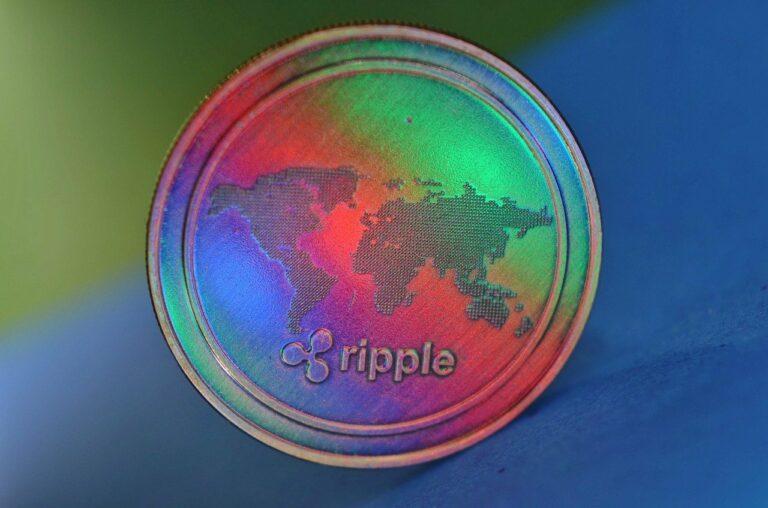On Monday (9 January 2023), Sendi Young, Managing Director for UK and Europe at FinTech firm Ripple, share her predictions for “what we can expect from crypto over the next 12 months.”
On 30 June 2021, Ripple announced Young’s appointment. Ripple’s press release stated that Sendi will “oversee strategy and champion the expansion of Ripple’s global financial network technology, RippleNet, which delivers financial solutions that enable customers to easily run and scale their business.”
This is what it said about Young’s background:
“With over fifteen years of experience in fintech, payments and consulting, Sendi joins Ripple following a five-year tenure at Mastercard, where she held leadership roles driving strategy, commercialisation, bank-fintech partnerships, and business development.
“Most recently, Sendi led the Fintech & Digital Segment globally for Mastercard’s Data & Services business and grew services that helped banks adopt real-time payments, Open Banking and Artificial Intelligence. Sendi brings with her deep industry and regional expertise which will be used to develop and further drive customer success across Europe.“
Anyway, yesterday (9 January 2022), she said:
- Despite the current bear market, the adoption of blockchain technology and digital assets by institutions is expected to increase as corporations continue to explore and launch pilot programs. The industry may also see consolidation as financially stable companies make acquisitions to fill in gaps in their own capabilities, and as a result of the recent collapse of FTX and other companies. Additionally, there may be an uptick in the number of crypto and blockchain firms being bought out by traditional financial service providers and established companies from other industries.
- As consumers and policymakers place greater emphasis on sustainability, there will be increased scrutiny of the environmental impact of blockchain and the energy consumption of blockchain solutions. To address this, the tokenization of carbon credits and the adoption of less energy-intensive blockchain systems may become more prevalent. Central bank digital currencies (CBDCs) are also expected to gain momentum as more countries announce plans to launch pilot programs. The collapse of FTX has further highlighted the need for a dependable digital asset for settlements.
- In 2023, the use of fiat-backed stablecoins is likely to grow as institutions seek to take advantage of the benefits of blockchain technology, such as real-time merchant settlements. This trend may also be driven by the creation of new non-USD fiat currencies. Regulation of the crypto industry is anticipated to come to the UK and Europe. Once the UK’s Financial Services and Markets Bill is implemented, regulators will develop a clear regulatory framework to support the development of the crypto asset sector. Meanwhile, the EU’s Markets in Crypto-Assets (MiCA) is expected to be passed by the European Parliament and although it will not come into effect until 2024, it will set the foundation for Level 2 European Supervisory Agencies to develop rules and standards for the crypto industry.
In August 2022, during her interview with Financial News, Young said:
“What really matters is having a clear regulatory framework on this so that all the players know the rules of the road and can innovate accordingly. Uncertainty is the biggest threat to innovation. We are not against regulation. Regulation will help crypto unlock utility.
“I have the opportunity to see what’s happening in the UK and Europe compared to the US and Asia. I can kind of see the differences. We have outright bans like in China, we have regulation by enforcement in the US, and we have something in between in places like the UK, Europe, Japan, Singapore, UAE, where it is more about creating that framework so that the players can innovate. That third one is certainly the approach that we favour.
“The Markets in Crypto Assets bill, which is the new legislation that the European Union just passed and is looking to take effect in the next few years, is very important. It is a pivotal moment and it is the first harmonised regulatory framework for such a big region that we have seen. We applaud that effort. That will really help innovation and help Europe take a step forward to being a crypto hub globally.“
Young was interviewed by CNBC Europe anchor Karen Tso at last year’s Money20/20 Europe conference (held 7-9 June 2022 in Amsterdam).
Here is what she said about the state of the crypto market and how Ripple is doing:
“At Ripple, we are really focused on the long term utility, not the volatility. Since the early days, we’re really focused on solving real-world problems with crypto and blockchain technologies, particularly around cross-border payments, addressing things like transparency, cost, speed, reliability, and we’ve built a very strong cross-border network based out of that. So, I think we remain to be really bullish on that crypto-enabled future for financial services…
“The last 18 months have been the strongest period for us. We’ve doubled our payments network, we have hundreds of customers with a payment flow run rate of over $15 billion today. We continue to see strong demand because we are solving real-world problems, real pain points with these technologies.“
Image Credit
Featured Image via Pixabay









